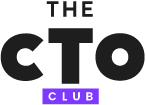Job interviews are tough. It's as if every interview question was crafted to take you out of the race.
You spend time reading about the company before the interview, rehearse your answers to every question you think they'll ask you, and then, on the day of the interview, you show up an hour early and drink far too much coffee.

Look, interviews are anxiety-inducing at the best of times, but we’re here to help reduce some of that pre-interview anxiety.
This guide lifts the lid on QA interviews, lists some of the toughest software testing interview questions, and explores some QA interview questions and answers to help you prepare for the big day.
How to Prepare for a QA Interview
The best way to prepare is to honestly evaluate your abilities and focus on your strengths while acknowledging your weaknesses.
Brush up on your definitions, understand the QA job market by reading relevant QA tester job guides, go through the questions and answers below, review the QA tester job description, and remember that the hiring process is as much about finding the right culture fit as it is about finding the most qualified candidate.
To excel in your QA interview, being familiar with industry-leading test management software is crucial. These tools are often the backbone of any successful QA project. Reading up on inspiring software testing articles can also be helpful.
How Long is a Typical QA Interview?
It depends on the interviewer and interviewee and how quickly you go through the questions.
QA interviews can take a long time, whether it be an interview for a quality assurance database testing role or an engineer, analyst, manager, or lead position. Often, there will be several rounds of interviews and technical interviews down the road.
Generally, most QA interviews will take one to two hours, though there may be multiple interviews throughout the hiring process.
List of QA Interview Questions and Answers
My goal with this article is to help prepare you for the kind of QA interview questions you'll be asked, whether they are about automation, your testing process, or your personality.
Often, the interviewer will be interested in your abilities as a QA engineer and your approach to testing.
Some QA interview questions will be open-ended or seem vague. This is because the interviewer wants to listen to your approach. They're trying to get a sense of the kind of worker you are and, more importantly, if you're the kind of worker that will fit in with their testing team.
Without further ado, here's a list of potential QA interview questions and answers for you to get an idea of your responses. Good luck!
1. Why should I hire you?
This is a favorite question for interviewers from all over the world. This isn’t a trick question - it’s an icebreaker.
Take this opportunity to put your strongest foot forward. Talk about what makes you passionate about QA and why you’ll do the job better than anyone else on the QA team due to the unique combination of talent and personality traits that only you can bring to the role. Don’t worry about being self-critical or overly humble here. The question is designed to talk about the strengths of the applicant.
2. What is a bug?
A bug is any error, mistake, or failure in software code that prevents the software function from executing correctly.
3. What is the difference between severity and priority?
Understanding these distinctions is essential for effective time management. Severity refers to the complexity of fixing an issue, while priority indicates the urgency of addressing it.
Just because an issue is high severity doesn’t necessarily mean it’s high priority and vice versa.
Here’s an example of a high-severity, low-priority issue:
- The application crashes when a rarely used function is run on legacy software that most users can’t access.
Here’s an example of a low-severity, high-priority issue:
- The wrong company logo is displayed on startup.
4. What is the difference between assert and verify commands in test automation?
There are many similarities between the two commands. Both check if the code conditions are true. The difference is what happens next.
- When an assert command fails, it will stop executing code, and the test will pause.
- When a verify command fails, it will plow ahead and execute the rest of the code.
5. What is the difference between Quality Assurance, Quality Control, and Quality Testing?
Quality assurance plans how a team and organization will monitor the test process. Quality control finds defects and suggests ways to improve the software. Testing is the process in which quality assurance and quality control find bugs.
Here's a related guide on the difference between quality assurance and quality engineering, as well as the difference between quality control and quality assurance.
6. When should QA start?
QA should begin as soon as possible. The earlier QA analysts, QA testers, and QA team lead to get involved in the process, the more headaches are prevented later in the software development cycle. Static tests can be performed before the software is fully functional.
7. What is the QA testing life cycle?
You can talk about the testing process that you're most familiar with, but here is a standard version:
- Requirements
- Planning
- Analysis
- Design
- Implementation
- Execution
- Conclusion
- Closure
8. What is a test plan?
A test plan is a document that outlines the details of the intended test. Before testing begins, it states the required roles, potential risks and solutions, and resources it will use.
9. What does a test plan include?
Test plans should include:
- Scope
- Approach
- Resources required
- Intended schedule of the test/s
10. What are the key benefits of automation testing in software development?
Automation testing enhances efficiency by executing test cases faster and reducing human errors. It improves test coverage by running extensive and repetitive test scenarios across different environments.
Additionally, automation testing supports continuous integration and delivery (CI/CD), enabling faster releases and higher software quality.
11. What would you include in an automation test plan?
Since building a plan for automation testing is a big undertaking, you don't have to go into every detail.
Instead, name a few essential aspects of a test plan—for example, how the plan should describe how the tests will be designed, how they will be executed, how defects will be managed, and what the test automation reporting will look like.
12. What is a use case?
Use cases describe the cause and effect of a function. It ensures that the user action and the system response are talking to each other properly.
13. What is a Test Strategy?
The test strategy outlines the plan for the testing stage of software development.
Unlike the test plan, which describes one specific test, the test strategy covers the entire testing phase of development and includes a description of the testing tools, test groups, test priorities, test record maintenance, and the test summary.
14. Are test strategies and test plans the same document?
No. Test plans collect and organize test cases.
Test strategies describe the approach towards testing. In general, test strategies are managed by the QA manager or QA lead, while the QA testers manage test plans.
15. What are some different kinds of testing?
Regression testing, exploratory testing, functional testing, load testing, integration testing, unit testing, cross-browser testing, white box testing, black box testing, volume testing, alpha testing, beta testing, and so many more.
Check out our post on software testing types for more on testing techniques.
16. What do you think are some advantages of manual testing?
Here are a few advantages of manual testing that you can talk about:
- It can be less expensive compared to automated testing.
- It can be easier for new teams or people new to QA to learn how to run a manual test so that it can be rolled out faster.
- Similarly, manual testing can be significant on short-term projects when test scripts aren't often re-used.
- You can analyze the product from the end-user's point of view when doing manual testing.
- Testing the GUI can feel more intuitive and lead to more accurate results when doing a manual test; the visual accessibility and preferences can be tricky to automate.
Here's an article where you can read more about the pros and cons of manual and automated testing.
17. What is a good test case?
A good test case clearly states the parameters for the test and the bugs it hopes to find.
18. What is the difference between functional and nonfunctional testing?
Functional testing tests the key parts of the software to ensure it matches requirements and specifications. Nonfunctional testing tests essential but not crucial aspects of the software, such as load times, stress, and overall performance.
19. Should QA resolve production issues?
You might have varying opinions on this, but I'd advise you to answer "Yes."
It’s often good for the QA to be involved in solving production issues. They should, when possible, write test cases, review test data, and try to find the problems. By getting involved, the QA minimizes the number of issues in the final product.
20. When you find a bug in production, how do you ensure the bug gets resolved?
The best action is to immediately write a test case for the bug and run a regression test—that way, any future tests performed on the software should check specifically for that bug.
21. What did you do in your last project?
There are no clear answers, only guidelines, for this one. It's common for interviewers to ask about your career trajectory and previous projects, so make a quick list of points in advance so you can speak to the projects that you think best represent your work.
My most significant advice is to answer as honestly as possible. Don’t exaggerate or undervalue your contribution to previous teams. Highlight moments when you took on QA project manager work outside your responsibilities to demonstrate ownership. Tell them what your day-to-day role was, what tools you used, and how the QA testing went.
22. How do you prioritize when you have so many tasks?
Think about how you’ve approached busy moments in the past. Are you a strict scheduler? Or do you prefer budgeting your time more loosely, allowing room to adapt to sudden issues? Again, these testing interview questions are more about determining whether you’re a good personality fit for their team.
If you feel that prioritizing multiple projects is one of your weak points, the Harvard Business Review has a guide on prioritizing at work properly.
23. Tell me about your most challenging project.
Take a deep breath. Let it all come back to you: the emotions, the late nights trying to find the problem, the inordinate number of take-out boxes piled up on your test.
This is an excellent opportunity to let your passion for QA come out. Walk them through what caused you the most difficulty, why it was so hard to find the solution, and how hard you worked to resolve it.
24. Tell me about a time you missed a bug.
In the first question, I told you to put your best foot forward unselfconsciously. This is why not every question will be phrased in a way that puts you in the best light.
In a QA interview, the person tasked with hiring needs to know that any potential team members are open about making mistakes.
The worst thing a QA tester can do is act like they’ve never made an error. Be open and honest. By the time you’re sitting in an interview, it’s a certainty that you’ve missed a bug or made a mistake. Tell them about your mistakes, how you resolved the problem, and what you’ve learned.
25. How would you test a broken toaster?
This is a bonus question because some organizations like these questions, and others don’t. On one hand, it puts the interviewer in a difficult position, which they almost certainly didn’t expect to be in. However, the benefit is that it requires quick, out-of-the-box thinking and allows interviewees to demonstrate creativity.
Due to the spirit of the question, I’m not going to tell you how to test a broken toaster. That’s up to you.
26. What are the essential characteristics of leaders in QA?
A question like this will probably be among any QA engineer interview questions or similar positions geared toward leadership. You might also be asked this question because your future manager would like to know what qualities you look for in your leaders.
Either way, the best answer is an honest one. Reflect on this and prepare to talk about what types of environments you work best in and how leaders can help create that environment.
Some ideas to talk about are strong communication, active listening, honesty, psychological safety, empowerment, autonomy, vision, and more.
27. What is the most essential test metric, and why?
There's no correct answer to this question, primarily because your chosen metric will depend on your goals and the type of test you're running—acceptance testing will measure very different metrics from exploratory testing, for example.
To answer this question, prepare to talk about standard QA metrics such as "bugs per test," which can be applied to many different types of testing, and what insight this metric tells you.
Also, prepare to talk about the rationale for choosing a specific metric according to the goals of your test, the goals of the broader organization, the test environment, and how you might do it.
For bonus points, you should check out Niall Lynch's piece on a QA metric that he has developed, called T2Q or Time to Quality—it can be applied pretty universally over any test, can be easily measured, and tells you something meaningful about your test efforts.
28. What are some of the goals you have for your career?
You'll need to find these answers independently, but to get some ideas, here's an article regarding managing your QA career.
29. What is data-driven testing?
Data-driven testing is a software testing technique that stores test data in a table or spreadsheet format. This allows testers to run multiple test cases using a single test script by retrieving data inputs dynamically from external sources such as databases, spreadsheets, or XML files. The test results are then logged in the same structured format, making analyzing performance across different data sets easier.
30. How is data-driven testing implemented?
In traditional testing, test inputs are hard-coded, limiting flexibility and scalability. Data-driven testing removes this constraint by parameterizing test cases and using global variables that read directly from external data sources. This approach ensures test coverage for various input scenarios without modifying the test script. For example, in an automation framework like Selenium, testers can use external CSV or Excel files to input dynamic values into test cases, allowing for extensive validation with minimal script maintenance.
31. What is a traceability matrix, and why is it important in software testing?
A Traceability Matrix is a document used in software testing to ensure that all requirements are linked to corresponding test cases. It helps track test coverage, ensuring that no requirement is left untested and preventing gaps in validation. This is particularly useful in impact analysis when changes occur, allowing teams to identify which test cases need to be updated or re-executed.
32. How do you verify that database constraints (such as foreign keys or uniqueness) are working as intended?”
I’ll try inserting or updating records that should violate each constraint—for example, attempting to insert a row with a non-existing foreign key, or creating duplicate entries where a unique index exists—and confirm the DB rejects them. Reviewing error logs and confirming that the DB returns the correct error codes helps ensure the constraints are enforced.
33. What are the three types of Traceability Matrices & what is the role of the Traceability Matrix in ensuring thorough testing?
Forward Traceability Matrix (FTM), which ensures that every requirement has mapped test cases for complete coverage; Backward Traceability Matrix (BTM), which ensures that every test case maps back to a requirement to prevent redundancy; and Bidirectional Traceability Matrix (BTM), which combines both forward and backward traceability to verify full test coverage and eliminate unnecessary test cases. The Traceability Matrix helps ensure complete test coverage by mapping test cases to project requirements and verifying that all functionalities are tested. It allows teams to track requirement changes and their impact on test cases, reducing the risk of missing critical functionality. Additionally, it supports quality assurance by identifying gaps, preventing redundant tests, and ensuring that all requirements are validated before deployment.
34. How does exploratory testing differ from scripted testing, and what are its key advantages?
Exploratory testing is an unscripted testing approach where testers actively explore the application to identify defects, unlike scripted testing, which follows predefined test cases. It allows for greater flexibility, uncovering unexpected issues that structured tests might miss. This approach helps detect usability issues, edge cases, and new defects introduced by recent changes.
35. What are the key differences between Black-Box and White-Box testing?
Black-box testing focuses on verifying software functionality without knowing the internal code structure, relying on inputs and expected outputs. In contrast, White-box testing requires understanding the internal code, logic, and structure to design test cases. While Black-box testing is commonly used for user-level and functional testing, White-box testing is more suited for unit testing, code coverage analysis, and security testing.
36. What is load, stress, and volume testing?
Load, stress, and volume testing are performance techniques that evaluate a system's behavior under different conditions.
- Load testing measures system performance under expected user loads to ensure it can handle regular traffic without issues.
- Stress testing pushes the system beyond its limits by applying extreme workloads to identify breaking points and failure recovery capabilities.
- Volume testing evaluates the system’s ability to process large amounts of data, ensuring stability and efficiency when handling high data loads.
Each test helps assess system reliability, scalability, and robustness under varying conditions.
37. How do you apply BVA to ensure thorough coverage of input ranges?
Boundary Value Analysis focuses on testing the edges of input ranges, such as minimum, maximum, just-below, just-above, and valid boundary points. If a form field accepts values from 1 to 100, for example, I’d typically test 0, 1, 2, 99, 100, and 101 (if applicable) to ensure the system correctly handles all critical boundaries.
38. Can you explain how equivalence partitioning helps optimize test case design?
Equivalence partitioning groups inputs into sets that should behave similarly—this prevents redundant tests. For instance, if valid inputs for a password field are 8 to 16 characters, you can test one valid length and one invalid length on either side of that range, rather than checking every single number from 1 to 20. It’s a time-saver that still ensures broad coverage.
39. When would you use a decision table approach, and how do you structure your test cases accordingly?
Decision tables are best for scenarios with multiple conditions and outcomes—like complex business rules. I first identify all possible conditions, then tabulate the actions or outcomes triggered by each combination. This method gives a clear, systematic view of every potential path, ensuring no logical branch is overlooked.
40. What’s your experience testing different types of APIs, and what challenges do you typically run into with SOAP vs. REST?
REST is generally more lightweight, often uses JSON, and fits nicely with web-based integrations. SOAP is more rigid, uses XML, and relies on WSDL definitions. Challenges can include handling complex authentication schemes, parsing XML vs. JSON, and dealing with stricter standards in SOAP-based services. I’ve found that automated tests for REST often need comprehensive coverage for different HTTP methods, while SOAP tests may require careful validation of XML schemas.
What's Next?
When it’s all said and done, most QA interviews come down to showing who you are as much as what you know. Yes, you’ll need to nail key concepts like automated vs. manual testing or severity vs. priority, but don’t underestimate the value of self-awareness and honest storytelling.
Hiring teams want someone who can collaborate effectively, own their mistakes, and keep projects on track under pressure.
Keep these questions in mind, but also remember that every interview is a two-way street—take the chance to see if the company is the right fit for you. If you walk in prepared, curious, and ready to adapt, you’ll give yourself the best shot at landing (and thriving in) your new QA role.
Subscribe to The CTO Club's newsletter for more interview questions and QA insights.


